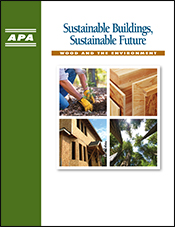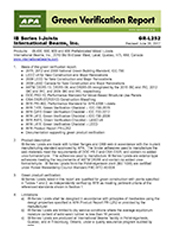Learn More
Sustainable Buildings, Sustainable Future
Describes the environmental benefits of engineered wood products.
Download ►
Green Verification Reports

APA Green Verification Reports help building officials and design professional determine a product's eligibility for points under recognized green building standards.
view ►
Carbon Calculator
The WoodWorks' Carbon Calculator estimates the amount of carbon stored in a building's wood products and the amount of greenhouse gas emissions avoided by eliminating steel and concrete.
Go ►
Environmental Product Declarations (EPDs)
EPDs, published by American Wood Council and Canadian Wood Council, provide building teams with science-based information on environmental impacts and facilitate more informed building material choices.
Go ►